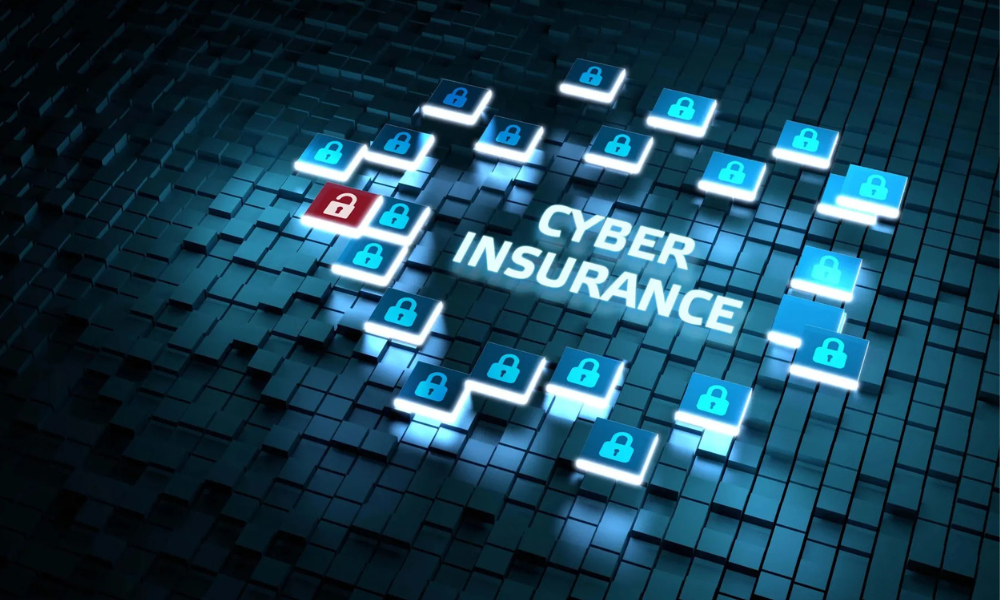The Non-Negotiable Shield of the Digital Age
We have definitively crossed the threshold into an era where our physical well-being and financial stability are inextricably linked to the security of our digital existence. The vast majority of our most valuable assets—our bank accounts, personal health records, employment data, intellectual property, and even the cherished memories stored in the cloud—reside not in a locked safe, but as vulnerable strings of code on a distributed network.
As the Digital Lifestyle matures, incorporating everything from Smart Home Security Hacks and Automated Investing Personal Finance to complex Remote Work Global Tax obligations, the potential surface area for malicious digital attack has expanded exponentially, making personal exposure a matter of when, not if.
This persistent and escalating threat environment necessitates a radical change in perspective: digital risk can no longer be managed solely through preventative technology, because even the best firewalls can be bypassed by human error or zero-day exploits.
Consequently, the last and most critical line of defense for the modern individual and small business is a comprehensive Cyber Insurance Must Havepolicy, transforming a potential catastrophic loss into a manageable financial recovery, making it the non-negotiable insurance product of the 21st century.
The Escalating Digital Threat Landscape

The necessity for cyber coverage is directly tied to the increasing frequency, sophistication, and financial impact of modern digital threats that target individuals and small entities.
A. Identity Theft and Financial Fraud
A. Identity theft has evolved from simple credit card fraud to complex takeovers of entire digital lives, including personal banking and investment accounts.
B. Sophisticated phishing and social engineering attacks trick individuals into divulging sensitive credentials, granting direct access to their financial data.
C. A breach of a Blockchain Identity Protection system, while rare, can lead to the irreversible loss of cryptocurrencies and other valuable decentralized assets.
D. The financial cost of recovering one’s identity and reversing fraudulent transactions can stretch into thousands of dollars and months of time.
B. The Ransomware Epidemic
A. Ransomware is no longer a threat reserved for large corporations; it is increasingly targeting individuals and small businesses with relatively small, but crippling, ransom demands.
B. An attacker can lock up critical family files, smart home controls, or business data, demanding payment in hard-to-trace cryptocurrency to restore access.
C. Even with robust backups, the time and professional effort required to clean the system and regain control represent a significant economic loss.
C. Smart Home and IoT Vulnerabilities
A. The proliferation of connected devices introduces new security vectors, as many IoT gadgets are shipped with weak, default security settings.
B. A compromised smart device, such as a camera or thermostat, can serve as a pivot point for an attacker to gain access to the main home network, exposing sensitive data.
C. This vulnerability highlights the need for a financial safety net when Smart Home Security Hacks fail, covering the costs of digital forensics and system remediation.
What Traditional Insurance Misses
Conventional insurance policies—such as homeowner’s or renter’s insurance—are fundamentally unequipped to handle the specific nature of digital loss.
A. Intangible Asset Exclusion
A. Standard insurance policies are designed to cover the loss of tangible physical assets like property, furniture, or jewelry following events like fire or theft.
B. They typically exclude the loss of intangible digital assets, which include crucial customer data, proprietary code, or valuable NFTs and cryptocurrencies.
C. If a hard drive is stolen, the policy might cover the cost of the physical drive, but not the immense value of the data stored upon it.
B. First- and Third-Party Digital Costs
A. Cyber attacks incur unique costs that fall outside the scope of traditional liability, including expenses for digital forensics and public relations.
B. First-party costs (direct costs to the insured) include loss of income, system restoration, and payment of the ransom itself, none of which are typically covered by standard policies.
C. Third-party costs (liability to others) arise if a system breach exposes customer data, leading to lawsuits, regulatory fines, and mandated notification expenses.
C. The Evolving Threat vs. Static Policies
A. Standard insurance policies are static and slow to adapt, whereas the digital threat landscape evolves daily, often utilizing zero-day exploits and new forms of social engineering.
B. Cyber insurance policies are specifically designed to be dynamic, adapting to cover new threats like deepfakes, synthetic identity theft, and losses tied to Metaverse assets.
Core Coverages: The Must-Have Components

A robust individual or small business cyber policy must include specific elements designed to mitigate both direct financial loss and recovery costs.
A. System Restoration and Business Interruption
A. The policy covers the direct cost of hiring IT forensic experts to identify the source of the breach, remove malware, and fully restore compromised systems to working order.
B. For small businesses and highly active Creator Economy Boom Insight entrepreneurs, coverage for business interruption is vital, replacing lost income while the systems are offline due to the attack.
C. This protection ensures the individual or business can quickly resume their digital lifestyle and professional operations without facing financial collapse.
B. Financial Loss and Extortion Coverage
A. This component covers direct financial losses resulting from unauthorized transfers, bank account takeovers, or investment account theft.
B. Crucially, it provides coverage for cyber extortion, often covering the cost of the ransom payment (if approved by the insurer) and the fees associated with professional negotiators to secure the release of data.
C. Without this, individuals using Automated Investing Personal Finance tools could see their entire life savings wiped out in a single, unrecoverable event.
C. Privacy Liability and Regulatory Fines
A. This coverage protects against the financial fallout if a breach exposes the private data of customers, clients, or employees, triggering third-party liability.
B. It covers the legal defense costs and settlement amounts related to lawsuits filed by affected parties whose privacy was compromised.
C. Furthermore, it covers the increasingly severe regulatory fines imposed by government bodies (like GDPR or CCPA) when a failure to protect data leads to a breach.
The Integration with the Digital Lifestyle
Cyber insurance is becoming functionally integrated with the very tools and behaviors that define the modern Digital Lifestyle.
A. Essential for Remote Work and Global Tax Compliance
A. Employees and companies engaging in Remote Work Global Tax activities rely on secure, uninterrupted access to sensitive financial and corporate systems across borders.
B. A cyber policy that includes liability for data exposure is essential protection when a remote worker’s home network, often less secure than a corporate one, is used to access critical company data.
C. The coverage is a critical risk mitigation tool for companies facing potential Permanent Establishment issues due to employee presence.
B. Protecting High-Value Digital Assets
A. For individuals invested in the Metaverse or involved in the Creator Economy, the policy must specifically address the loss or theft of high-value, tokenized assets.
B. This includes coverage for NFTs, cryptocurrencies stored in hot or cold wallets, and losses resulting from vulnerabilities in smart contracts.
C. A specialized cyber policy recognizes the Personal Data Value Increase of digital intellectual property and financial holdings.
C. Bundling with Wellness and Financial Tech
A. Some insurance providers are beginning to offer premium reductions or enhanced coverage for users who actively utilize advanced security and Wellness Tech features.
B. This incentivizes behaviors like using multi-factor authentication, employing AI-driven Smart Home Security Hacks, and regularly conducting digital detoxes—the core tenets of a secure Digital Detox New Norm.
C. Security is now viewed as an integrated ecosystem of tools, behaviors, and financial protection.
Securing Your Policy: Practical Steps
Choosing and maintaining a comprehensive cyber insurance policy requires diligence and an understanding of policy subtleties.
A. Due Diligence and Underwriting Requirements
A. Cyber insurers require the insured party to demonstrate a baseline level of security diligence before issuing a policy.
B. This often includes requirements like having a functional firewall, using updated antivirus software, and mandating Multi-Factor Authentication (MFA) for all critical accounts.
C. Failure to meet these basic underwriting requirements can lead to a denial of claim in the event of a breach, making compliance critical.
B. Understanding Exclusions and Limits
A. Carefully review the policy’s exclusions, which often specify types of attacks or losses that are not covered, such as losses arising from a general failure to update software.
B. Pay close attention to the sub-limits on specific types of claims, such as the maximum payout for forensic costs or ransom demands, ensuring they match your potential exposure.
C. A thorough understanding of the policy structure prevents costly surprises during a crisis.
C. The Importance of an Incident Response Plan
A. The most valuable part of a good cyber policy is often the Incident Response Plan and the pre-vetted panel of experts the insurer provides.
B. Upon discovering a breach, the insured contacts the insurer, who immediately coordinates a team of legal, IT forensics, and public relations specialists.
C. This immediate, coordinated response is often the single most important factor in limiting the overall damage and cost of an attack.
Conclusion
The title Cyber Insurance Must Have is no exaggeration; it is a declaration of modern financial reality. In the complex landscape of the 2025 digital lifestyle, insurance transforms unavoidable digital risk into a predictable cost of doing business and living a connected life.
The best technology is still only a preventative measure, but insurance is the necessary plan for financial recovery when prevention fails. It ensures that a single successful cyberattack does not dismantle a lifetime of savings or destroy a small business’s future.
The policy acts as an outsourced crisis management team, providing immediate access to experts needed to navigate the legal and technical chaos of a breach. Investing in comprehensive cyber coverage is fundamentally an investment in peace of mind and resilience. It is the final, non-negotiable layer of protection for all digital assets.











